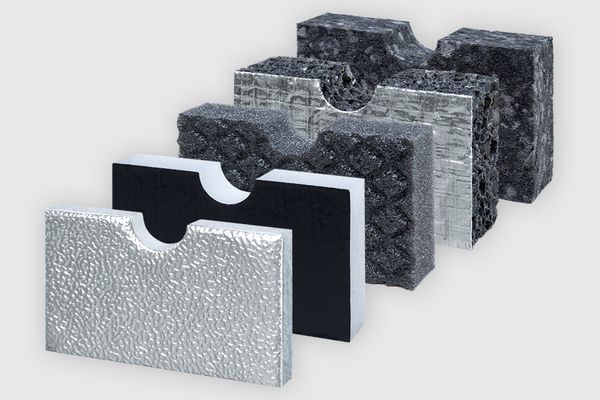Air-borne noise: Effective sound insulation for machines and vehicles
Air-borne noise is the propagation of sound waves through the air, resulting in audible noise. In many technical and industrial applications, air-borne noise can cause disturbing noise pollution. Effective air-borne noise insulation is therefore essential to create a pleasant and quiet environment.
A distinction is made between:
- Air-borne noise insulation: This refers to methods of reducing the transmission of air-borne noise between rooms or from outside to inside. This can be achieved by using dense and heavy materials.
- Air-borne noise attenuation: This describes the process of reducing the intensity of air-borne sound waves within a room. Materials such as acoustic foam and sound-absorbing panels are often used to minimise sound transmission.
Areas of application for air-borne noise insulation/air-borne noise reduction
- Machines & vehicles: In machines and vehicles, including buses and rail vehicles, air-borne noise is generated by engines, transmissions and other mechanical components. Targeted air-borne noise insulation reduces the propagation of these noises and ensures a quieter environment.
- Heat pumps: Heat pumps also generate airborne noise due to their mode of operation. The use of sound-insulating and sound-absorbing materials can effectively minimise noise generation. The use of the Cello® SB Basic compressor cover also contributes effectively to noise reduction by specifically dampening compressor noise.
- Medical technology: In medical technology, a quiet environment is of great importance. Airborne noise can be generated by medical devices and equipment, which is why special sound insulation solutions are required here.
- Cabins/capsules and hoods: In cabins, capsules and under hoods, as used in industry, protection against airborne noise is important in order to improve working conditions and reduce noise pollution.
- Rail vehicles: Rail vehicles are particularly susceptible to airborne noise caused by movement on the tracks. Special damping materials are used here to control noise levels.
- Construction and agricultural machinery: Construction and agricultural machinery generate considerable noise due to the way they operate. The use of sound-absorbing materials and designs helps to reduce noise pollution.
- Room acoustics: Sound insulation also plays an important role in room acoustics. Appropriate measures can be taken to reduce sound transmission in buildings and rooms. In addition, acoustic elements can be used to reduce reverberation in the room, resulting in more pleasant acoustics.
Cellofoam products for air-borne noise insulation/attenuation
Cellofoam offers a wide range of products specially developed for air-borne noise insulation and attenuation. These include sound-insulating and sound-attenuating materials that can be used effectively in the above-mentioned areas of application.
With Cellofoam's solutions, you can ensure that airborne noise pollution is significantly reduced, creating a quieter and more pleasant environment.










